Long March Project – Chinatown
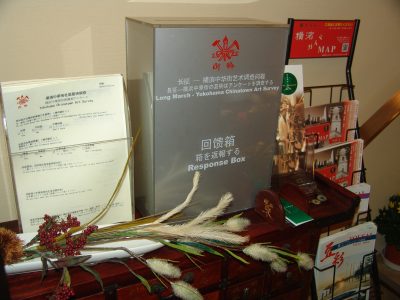
Yokohama Chinatown | Yokohama Triennial
Chinatown
Time: November 5 – May 8, 2005
Location: Yokohama
Participating Artists: Chen Xiaoyun, Yao Jui-Chung, Jiang Jie, Long March Collective (Guo Fengyi, Hu Xiancheng, Qiu Zhijie, Xu Zhen, Zhao Gang, and an anonymous artist)
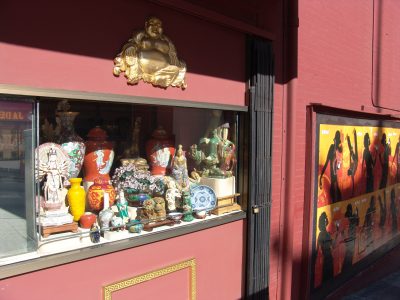
San Francisco Chinatown | Curating Contemporary Art, California College of Art
Chinatown
Time: November, 2005
Location: San Francisco
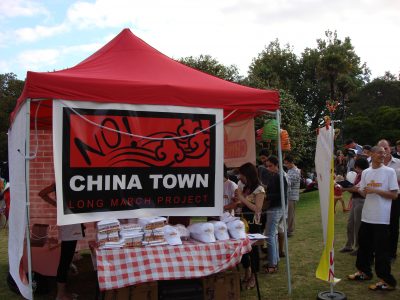
Auckland (No) Chinatown | Auckland Triennial
Chinatown
Time: March 9 – June 3, 2007
Location: Auckland
Auckland (No) Chinatown | Auckland Triennial
Chinatown
Time: March 9 – June 3, 2007
Location: Auckland
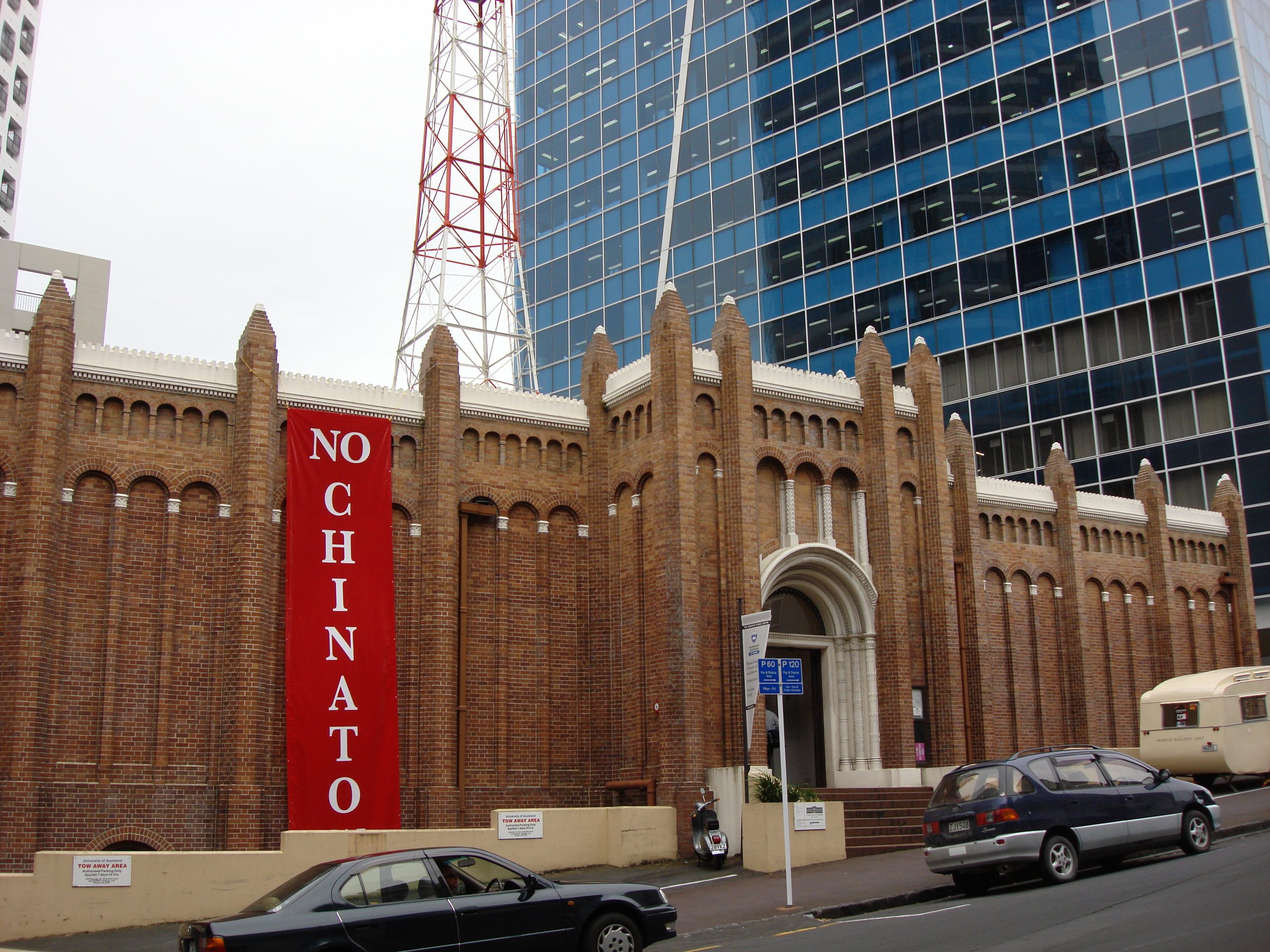
Façade of Gus Fisher Gallery, Auckland, 2007
For the 2007 Auckland Triennial, the Long March – Chinatown was brought to Auckland in a collaborative project with artist Kah Bee Chow and Daniel Malone entitled No Chinatown. The project took a public minded approach by utilizing public spaces not just as exhibitions sites, but also involving the contributions of many other individuals, communities and collectives as a vital part of the work. The metaphor of “Chinatown” was used to engage with the Triennial’s curatorial theme of Turbulence, and the subsequent dynamics of immigration, tourism and cultural diaspora raised in the process of globalization, with Chinatown serving not as an illustration for identity politics or post colonial discourse, rather, a metaphorical site to explore general notions of performed and constructed identity, as well as focusing on the local context of Auckland, a city, which has been deemed a “high-immigration” city.
No Chinatown engaged with the ambivalent social atmosphere, at times ambiguously, at time provocatively around the relationship between Auckland and its Chinatown(s). Should Auckland have a Chinatown? Does Auckland in fact already have Chinatown(s)? What indeed constitutes a Chinatown or any (self) determined cultural identification with place? No Chinatown will raise these questions and the discursive space for any number of simultaneous answers, sometimes contradictory, acting as a catalyst to precipitate the emotional state of Auckland; at times lamenting a lack, proposing an action, at others giving voice to confusion or resisting an over-determination. It engaged in the Triennial’ss broad discourse around multi-culturalism as well as the unique context of Aotearoa New Zealand’s bi-cultural geo-politic and the notion of Tangata Whenua (People of the Land).
Within the Triennial space, No Chinatown took place in an array of art venues offered by the triennial, including the Gus Fischer Gallery (Center of New Zealand Art Research and Discovery, University of Auckland), the St Paul Street Gallery (Auckland University of Technology) and Artspace. The display at each venue was both individual and linked, building momentum and resonance with a larger space of transitory events and activities outside and between the galleries during the course of the Triennial, most significantly at the Auckland City Council facilitated Lantern Festival in Albert Park on the triennial’s opening weekend, and through a number of events directly involving students, such as an architecture competition and a public survey organized through the Long March’s involvement in the Elam School of Fine Arts Artists Residency program.
Like other Long March Projects, No Chinatown was a process, an event, and a performance brought forth from grounded research which examines the relationship between theory and practice. No Chinatown constructed a complicated context, which is diverse and organic, and approached exhibition culture not as a platform for selecting works to forcefully emphasize a point, but rather, about understanding the power of visual expression in interpreting the relationship between works and their display, history and the present, and the individual and collective, as well as how visual display can excite the individual and collective expression which is both visible and invisible, psychological and bodily within our contemporary context.
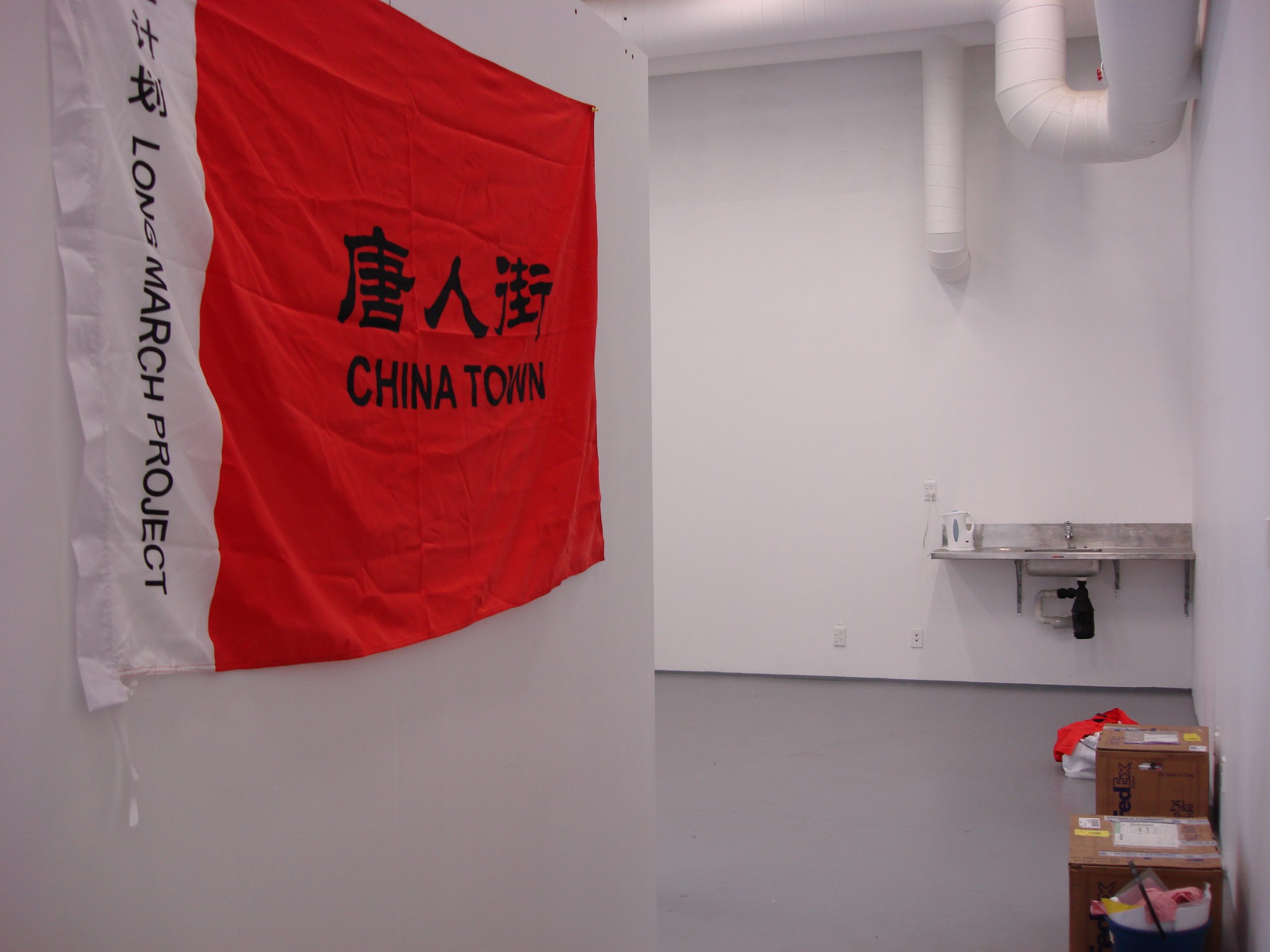
Installation view, Auckland, 2007
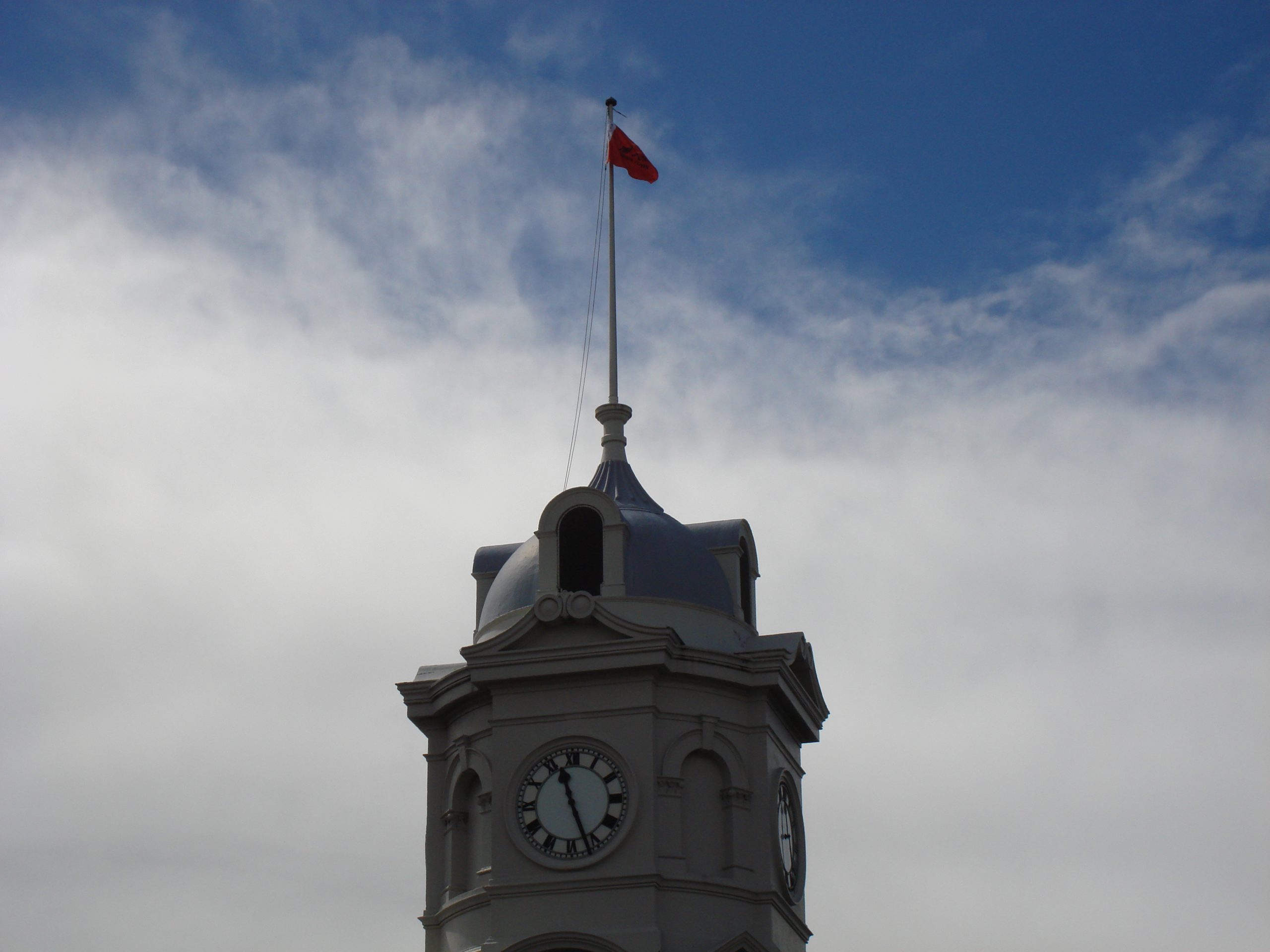
Flag of "Chinatown" floating on top of Auckland Art Gallery, Auckland, 2007
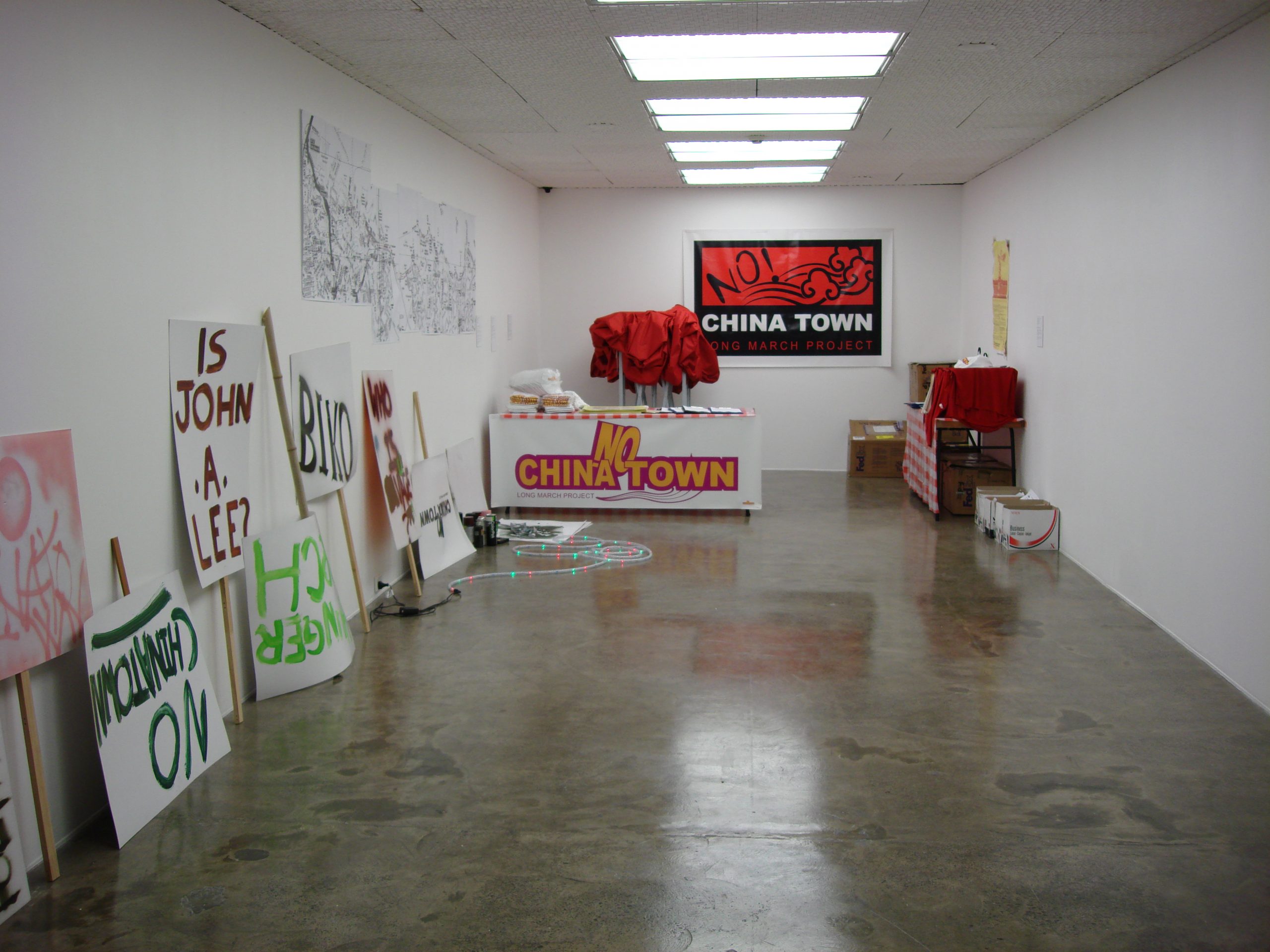
Installation view at Artspace, Auckland, 2007
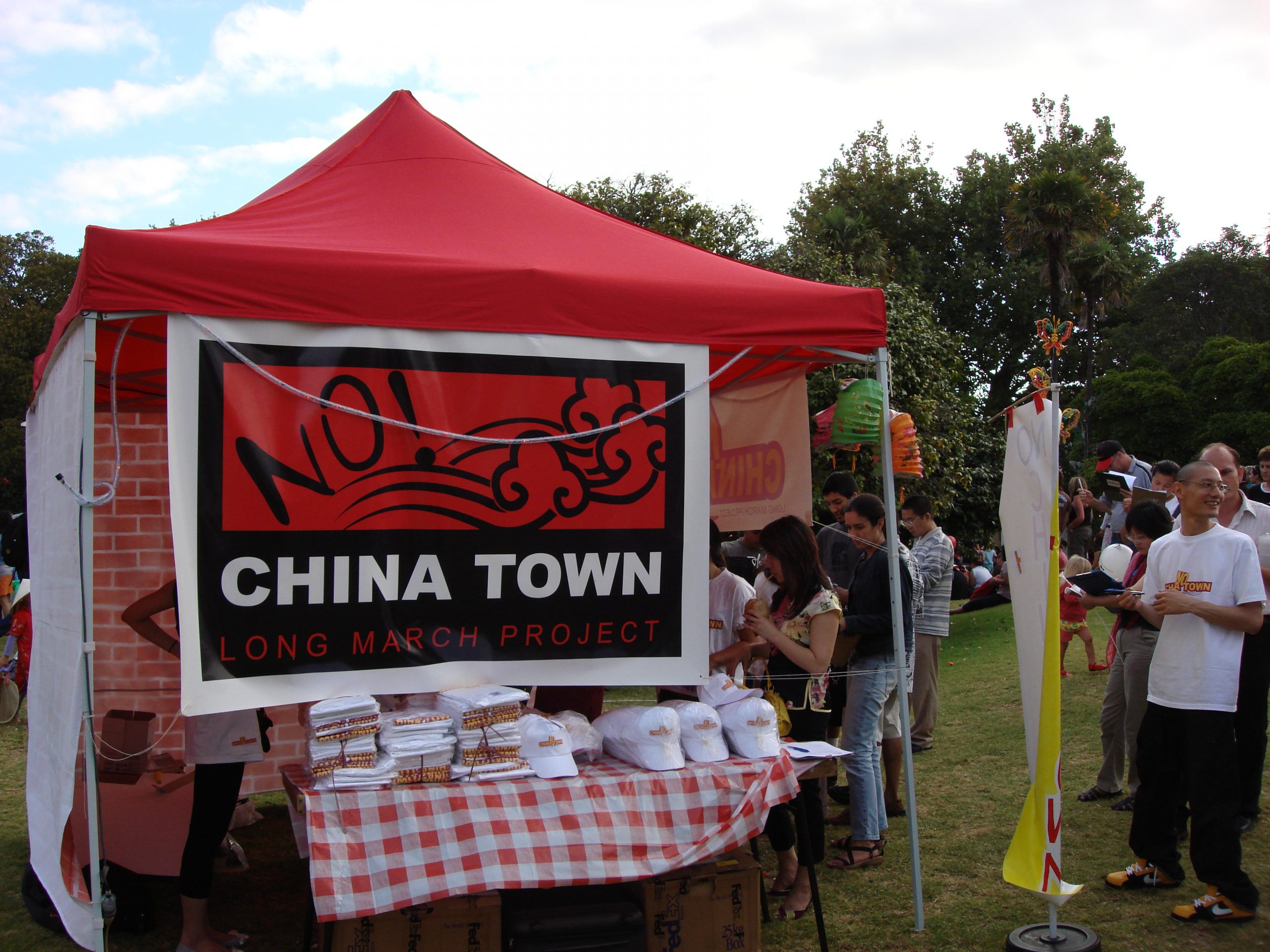
Lantern Festival, Albert Part, Auckland, 2007
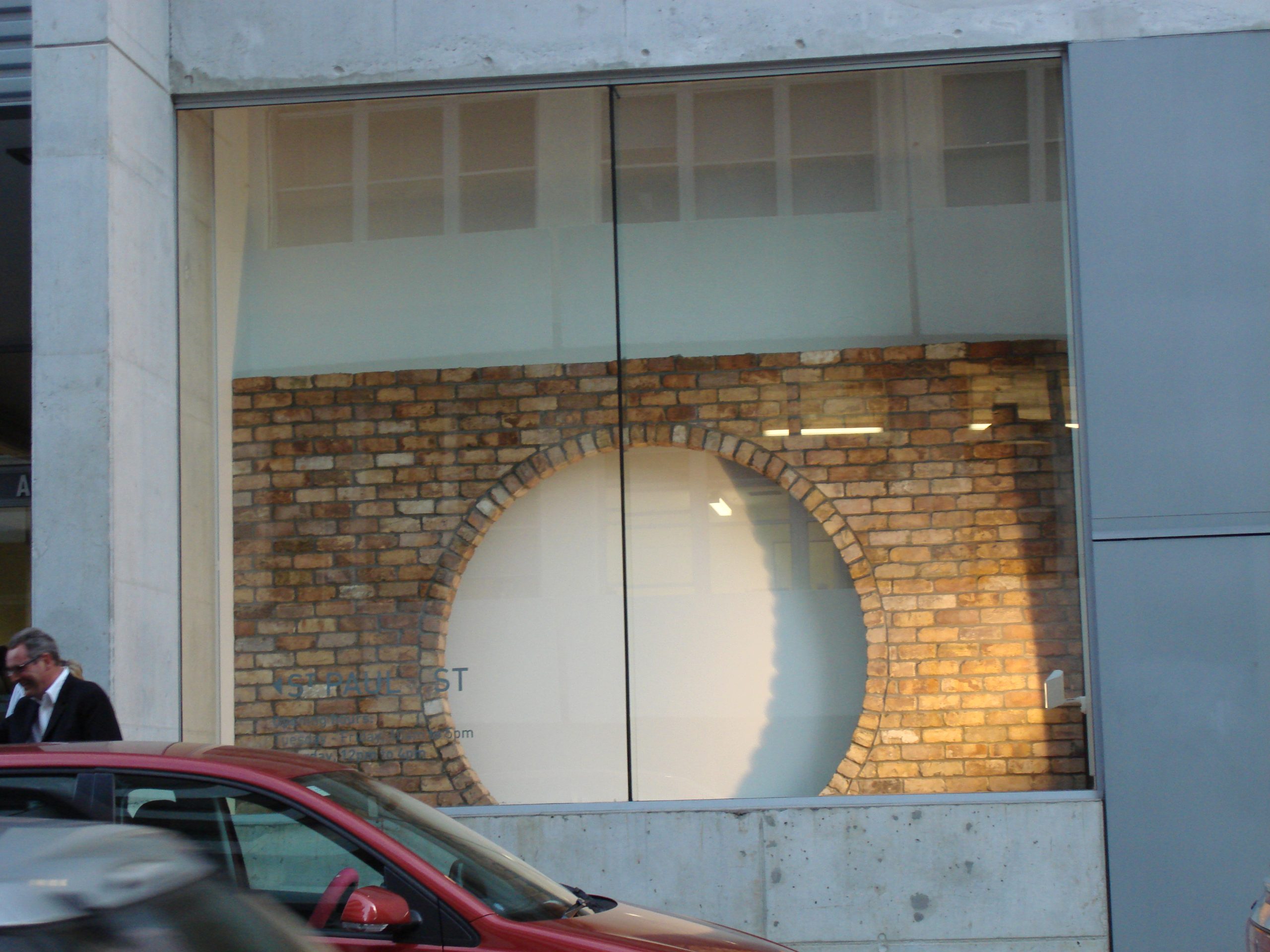
Outside St. Paul Street, Auckland, 2007
For the 2007 Auckland Triennial, the Long March – Chinatown was brought to Auckland in a collaborative project with artist Kah Bee Chow and Daniel Malone entitled No Chinatown. The project took a public minded approach by utilizing public spaces not just as exhibitions sites, but also involving the contributions of many other individuals, communities and collectives as a vital part of the work. The metaphor of “Chinatown” was used to engage with the Triennial’s curatorial theme of Turbulence, and the subsequent dynamics of immigration, tourism and cultural diaspora raised in the process of globalization, with Chinatown serving not as an illustration for identity politics or post colonial discourse, rather, a metaphorical site to explore general notions of performed and constructed identity, as well as focusing on the local context of Auckland, a city, which has been deemed a “high-immigration” city.


No Chinatown engaged with the ambivalent social atmosphere, at times ambiguously, at time provocatively around the relationship between Auckland and its Chinatown(s). Should Auckland have a Chinatown? Does Auckland in fact already have Chinatown(s)? What indeed constitutes a Chinatown or any (self) determined cultural identification with place? No Chinatown will raise these questions and the discursive space for any number of simultaneous answers, sometimes contradictory, acting as a catalyst to precipitate the emotional state of Auckland; at times lamenting a lack, proposing an action, at others giving voice to confusion or resisting an over-determination. It engaged in the Triennial’ss broad discourse around multi-culturalism as well as the unique context of Aotearoa New Zealand’s bi-cultural geo-politic and the notion of Tangata Whenua (People of the Land).


Within the Triennial space, No Chinatown took place in an array of art venues offered by the triennial, including the Gus Fischer Gallery (Center of New Zealand Art Research and Discovery, University of Auckland), the St Paul Street Gallery (Auckland University of Technology) and Artspace. The display at each venue was both individual and linked, building momentum and resonance with a larger space of transitory events and activities outside and between the galleries during the course of the Triennial, most significantly at the Auckland City Council facilitated Lantern Festival in Albert Park on the triennial’s opening weekend, and through a number of events directly involving students, such as an architecture competition and a public survey organized through the Long March’s involvement in the Elam School of Fine Arts Artists Residency program.
Like other Long March Projects, No Chinatown was a process, an event, and a performance brought forth from grounded research which examines the relationship between theory and practice. No Chinatown constructed a complicated context, which is diverse and organic, and approached exhibition culture not as a platform for selecting works to forcefully emphasize a point, but rather, about understanding the power of visual expression in interpreting the relationship between works and their display, history and the present, and the individual and collective, as well as how visual display can excite the individual and collective expression which is both visible and invisible, psychological and bodily within our contemporary context.


